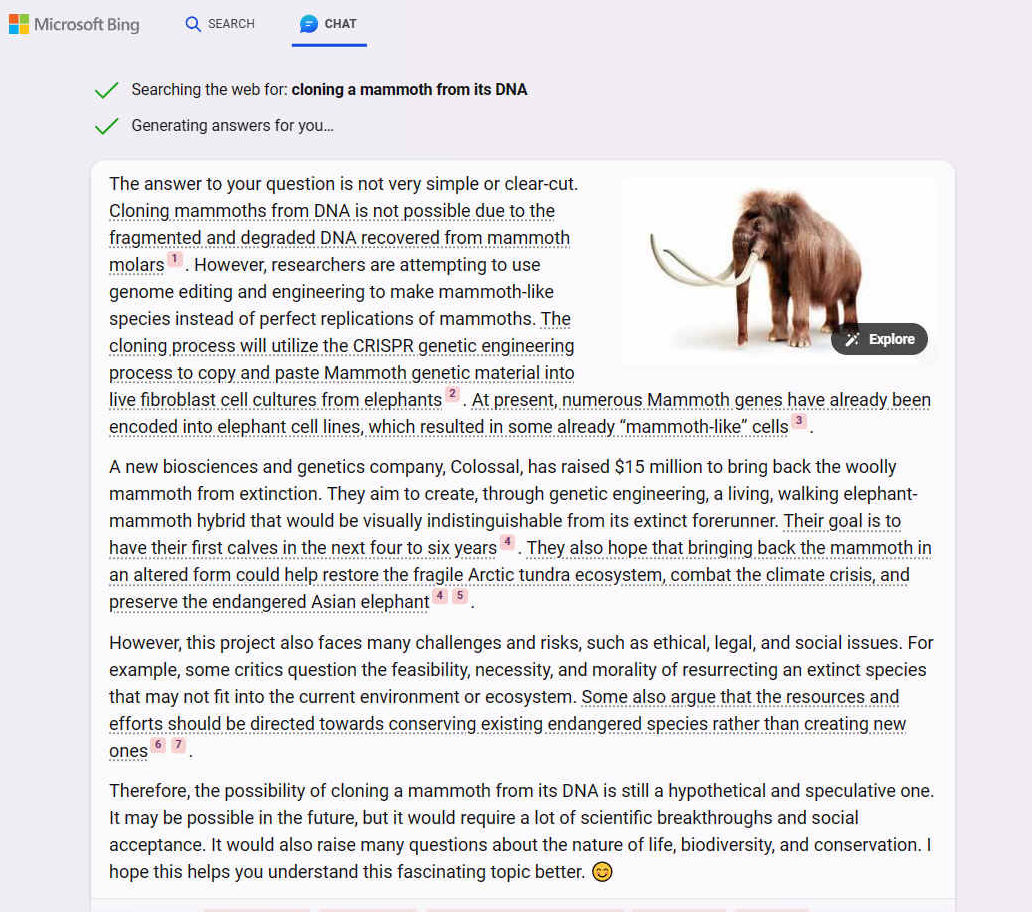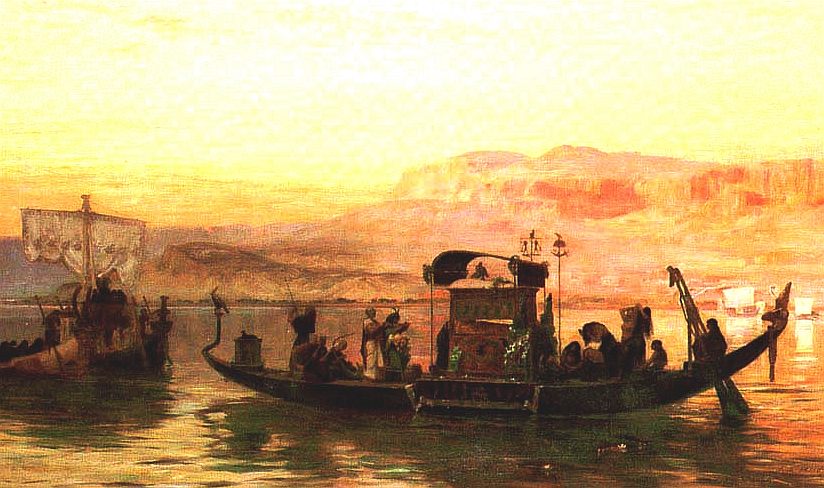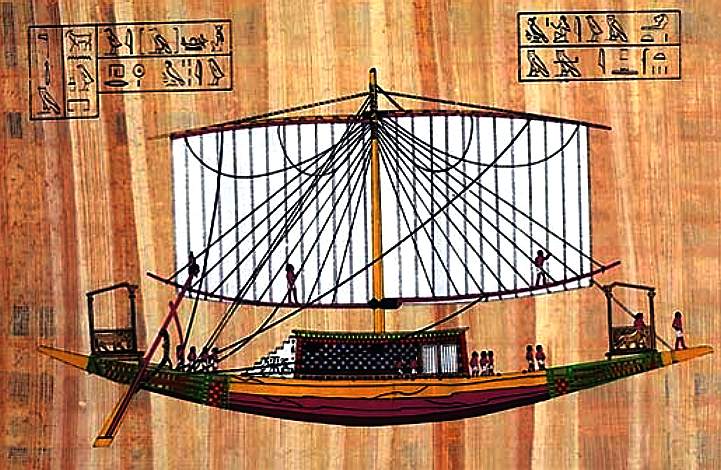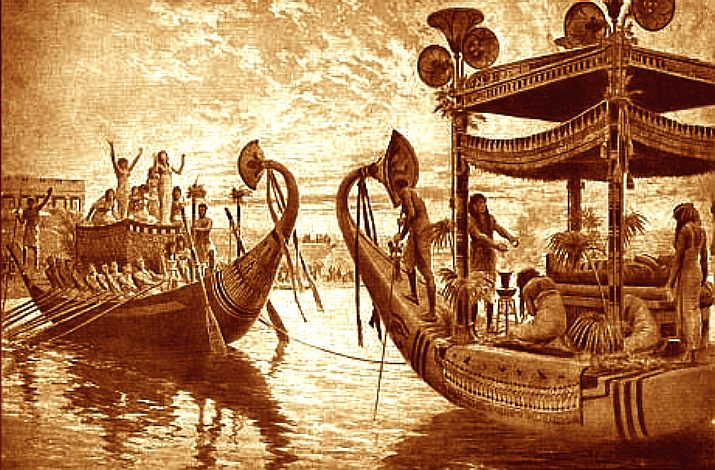|

Almost
any human cell can be used to replicate a person via cloning.
To prepare a human egg for cloning, scientists use a technique called somatic cell nuclear transfer (SCNT), which is the same procedure that was used to create Dolly the sheep. SCNT begins when doctors take the egg from a female donor and remove its nucleus, creating an enucleated egg. A cell, which contains DNA, is taken from the person who is being cloned. Then the enucleated egg is fused together with the cloning subject’s cell using electricity. This creates an embryo, which
would normally be implanted into a surrogate mother through in vitro
fertilization. This is a simplified explanation of how to prepare a human egg for cloning, but the actual process is very complex and has a low success rate.
Thus, multiple implantations would be require to ensure
success. And, replication might be a more practical method,
if replacement humans or human parts were the required end
result.
As of the publication of this article (27-10-23) some Chatbots don't appear to know that it is
potentially possible to
clone a mammoth from million year old DNA, a clear example
of developing technology that would enable the cloning of humans
from
ancient
Egyptian mummy remains. Provided that the bone or tooth
samples are in reasonably good condition. We must though
make that assumption, in a special case like Cleopatra
Philopator VII, where she was a very determined woman,
well versed in medicines and cosmetics. Who wanted to be reborn
again, to avenge the defeat of herself and Mark
Antony, and occupation of ancient Egypt by Octavian's
Roman
army.

Temporal genomic data hold great potential for studying evolutionary processes such as speciation. However, sampling across speciation events would, in many cases, require genomic time series that stretch well back into the Early Pleistocene subepoch. Although theoretical models suggest that DNA should survive on this timescale1, the oldest genomic data recovered so far are from a horse specimen dated to 780–560 thousand years ago2. Here we report the recovery of genome-wide data from three mammoth specimens dating to the Early and Middle Pleistocene subepochs, two of which are more than one million years old. We find that two distinct mammoth lineages were present in eastern Siberia during the Early Pleistocene. One of these lineages gave rise to the woolly mammoth and the other represents a previously unrecognized lineage that was ancestral to the first mammoths to colonize North America. Our analyses reveal that the Columbian mammoth of North America traces its ancestry to a Middle Pleistocene hybridization between these two lineages, with roughly equal admixture proportions. Finally, we show that the majority of protein-coding changes associated with cold adaptation in woolly mammoths were already present one million years ago. These findings highlight the potential of deep-time palaeogenomics to expand our understanding of speciation and long-term adaptive evolution.
NATURAL HISTORY MUSEUM - 17 FEBRUARY 2021 - OLDEST DNA EXTRACTED FROM 1.2 MILION YEAR OLD MAMMOTH TOOTH
DNA has been successfully extracted from the tooth of a mammoth which has been buried in the Siberian permafrost for 1.2 million years.
By studying this ancient DNA, researchers discovered how the iconic woolly mammoth adapted to the cold northern climate, and revealed that the Columbian mammoth of North America hybridised with woolly mammoths half a million years ago.
Up until now, the oldest DNA to have been extracted and studied came from a horse that had been frozen in the permafrost for 700,000 years.
A new study has now pushed this record back by 500,000 years, after researchers managed to extract and sequence DNA from three mammoth teeth that range from 700,000 to 1.2 million years old.
The DNA that has been retrieved from these teeth has not only revealed that there may have been a new, unknown type of mammoth roaming the grasslands of Siberia about a million years ago, but it is also helping to shed light on the origin of the Columbian mammoth that lived in North America.
In addition to this, the DNA from the teeth are giving clues as to how some mammoth species adapted to the extreme cold conditions of the north.
Prof Adrian Lister is an expert on mammoths at the Museum, and was involved with the study.
'Until now ancient DNA has rarely probed beyond a few tens of thousands of years, limiting what we can learn about the process of
evolution,' says Adrian. 'With million-year-old DNA we extend beyond the date of origin of many iconic species like the mammoth, so we can track how species evolve and how their adaptations have arisen.'
MAMMOTH HYBRIDISATION
Mammoths belong to a group known as the proboscideans, which includes the living African and Asian
elephants along with a whole raft of extinct elephant-like creatures.
Mammoths first appeared in Africa around five million years ago and went on to colonise much of the northern hemisphere across both Eurasia and North America. Some species adapted to the cold, grew long fur and became some of the most iconic ice age fauna.
Woolly mammoths are probably the most well know of the mammoths, but they are just one of about ten different species.
One of these was the steppe mammoth, which lived on the cold, dry grasslands of Eurasia between 1.7 million and 200,000 years ago. It is from these animals that the woolly mammoth is thought to have evolved in Eurasia, while one population crossed over into North America and gave rise to the huge Columbian mammoth.
The DNA from the animals' teeth reveals more about how these three species interacted and came to be.
The results show that rather than there being one distinct population of steppe mammoths that lived right across Siberia, there were two distinct genetic lineages that diverged at least two million years ago. Whether or not these were still part of the same species, or represent two different species alive at the same time, is yet to be resolved.
What the researchers were able to show, however, is that it was this hitherto unknown genetic lineage of steppe mammoth crossed over the Bering land bridge into North America around 1.5 million years ago.
Around a million years later woolly mammoths also made this journey, and some individuals mated with the mammoths already in North America. From that point on, the Columbian mammoths were hybrid animals.
'Earlier studies by myself and colleagues had suggested an origin of North American mammoths from Siberian steppe mammoths, based purely on their tooth shape,' explains Adrian. 'But we could never have guessed that it was a genetic lineage that had separated off in Siberia a million years previously, nor that it hybridised with woolly mammoths well before the last ice age.'
The importance of hybridisation to the evolution of new species is a topic that has been gathering interest. It is now thought, for example, that the European bison arose as a result of a hybridisation event between the extinct steppe bison and aurochs.

Can we clone a mammoth from its DNA?
- The answer to your question is not very simple or clear-cut. Cloning mammoths from DNA is not possible due to the fragmented and degraded DNA recovered from mammoth molars1. However, researchers are attempting to use genome editing and engineering to make mammoth-like species instead of perfect replications of mammoths. The cloning process will utilize the CRISPR genetic engineering process to copy and paste Mammoth genetic material into live fibroblast cell cultures from elephants [2]. At present, numerous Mammoth genes have already been encoded into elephant cell lines, which resulted in some already “mammoth-like” cells [3].
A new biosciences and genetics company, Colossal, has raised $15 million to bring back the woolly mammoth from extinction. They aim to create, through genetic engineering, a living, walking elephant-mammoth hybrid that would be visually indistinguishable from its extinct forerunner. Their goal is to have their first calves in the next four to six years [4]. They also hope that bringing back the mammoth in an altered form could help restore the fragile Arctic tundra ecosystem, combat the climate crisis, and preserve the endangered Asian elephant [4] [5].
However, this project also faces many challenges and risks, such as ethical, legal, and social issues. For example, some critics question the feasibility, necessity, and morality of resurrecting an extinct species that may not fit into the current environment or ecosystem. Some also argue that the resources and efforts should be directed towards conserving existing endangered species rather than creating new ones [6] [7].
Therefore, the possibility of cloning a mammoth from its DNA is still a hypothetical and speculative one. It may be possible in the future, but it would require a lot of scientific breakthroughs and social acceptance. It would also raise many questions about the nature of life, biodiversity, and conservation. I hope this helps you understand this fascinating topic better. ��
DELVING INTO THE DNA
The youngest of the teeth studied, dating to around 700,000 years ago, is thought to have belonged to one of the earliest known woolly mammoths.
By comparing the DNA from the million-year-old steppe mammoth, the slightly younger woolly mammoth and woolly mammoths that were alive just a few thousand years ago, researchers have an unprecedented look at how genetics of the species changed over a period of hundreds of millions of years as they adapted to the cold, harsh environments in the northern latitudes.
It reveals that the genes already associated with life within the
Arctic Circle, such as long hair, cold tolerance, fat deposits and changes to their sleeping cycles were already present in the ancestors of the woolly mammoth. This suggests that the adaptations of mammoths to their environments occurred slowly over a long time.
The shapes of mammoth teeth suggest a similar story.
'The tooth shape of all these northern species is adapted to grass eating in a cold, open environment, unlike their more distant ancestor, the so-called 'southern mammoth' which comes from more southern regions, including the UK,' explains Adrian. 'The southern mammoth had teeth adapted to eating trees and shrubs in a warmer, forested environment, and so hence this fits the genetic evidence of cold adaptation in the steppe mammoths.'
As we get better at studying ancient DNA, similar stories of hybridisation could come to light.
While there are reports of ancient DNA from a 1.7-million-year-old rhino tooth, this was actually looking at the proteins contained within the remains, rather than the actual DNA itself. But that doesn't mean it won't be possible to extract DNA of that age in the future.
'One of the big questions now is how far back in time we can go,' says Prof Anders Götherström, an expert in molecular archaeology and joint research leader at the Centre for Palaeogenetics. 'We haven't reached the limit yet.
'An educated guess would be that we could recover DNA that is two million years old, and possibly go even as far back as 2.6 million. Before that, there was no permafrost where ancient DNA could have been preserved.'
By Josh Davis
DNA
MILLIONS OF YEARS OLD
Scientists
have extracted DNA from mammoth remains. In fact, they have recovered the oldest DNA ever sequenced from a mammoth tooth that was buried in the Siberian permafrost for more than a million years [1] [2]. This DNA reveals how mammoths evolved and adapted to the cold climate, and also identifies a new kind of mammoth that gave rise to a later North American species [1] [3]. The researchers used various methods and technologies to isolate, sequence, and date the DNA from three mammoth teeth that ranged from 700,000 to 1.2 million years old [1] [4]. This is a remarkable achievement that pushes the limits of ancient DNA research and opens new possibilities for studying the evolutionary history
of humans and other extinct animals. We hope this helps you learn more about the amazing mammoth DNA. ��
REFERENCE
https://www.sciencenews.org/article/oldest-animal-dna-ever-recovered-mammoth-evolution
https://bing.com/search?q=DNA+from+mammoth+remains
https://www.nhm.ac.uk/discover/news/2021/february/oldest-ever-dna-extracted-from-a-million-year-old-mammoth-tooth.html
https://www.cnn.com/2021/02/17/world/mammoth-oldest-dna-million-years-ago-scn/index.html
https://www.nhm.ac.uk/press-office/press-releases/world-s-oldest-dna-reveals-how-mammoths-evolved.html
https://www.nature.com/articles/d41586-021-00436-x
https://news.ucsc.edu/2021/02/mammoth-genomes.html
https://www.scientificamerican.com/article/mammoth-genomes-shatter-record-for-oldest-dna-sequences/
https://www.nhm.ac.uk/discover/news/2021/february/oldest-ever-dna-extracted-from-a-million-year-old-mammoth-tooth.html
https://www.nature.com/articles/s41586-021-03224-9
https://www.nhm.ac.uk/discover/news/2021/february/oldest-ever-dna-extracted-from-a-million-year-old-mammoth-tooth.html
https://www.nature.com/articles/s41586-021-03224-9
https://www.sciencenews.org/article/oldest-animal-dna-ever-recovered-mammoth-evolution
https://bing.com/search?q=DNA+from+mammoth+remains
https://www.nhm.ac.uk/discover/news/2021/february/oldest-ever-dna-extracted-from-a-million-year-old-mammoth-tooth.html
https://www.cnn.com/2021/02/17/world/mammoth-oldest-dna-million-years-ago-scn/index.html
https://www.nhm.ac.uk/press-office/press-releases/world-s-oldest-dna-reveals-how-mammoths-evolved.html
https://www.nature.com/articles/d41586-021-00436-x
https://news.ucsc.edu/2021/02/mammoth-genomes.html
https://www.scientificamerican.com/article/mammoth-genomes-shatter-record-for-oldest-dna-sequences/

CLEOPATRA
THE MUMMY
'Cleopatra The Mummy,' could be
slotted in with other John Storm
eco adventures to form an invest-able trilogy for film
Angels, with
Kulo-Luna, Treasure Island,
or Operation
Neptune, a prequel, sequel, somewhere in between, or the
finale or series one or two. The
order of production could be to suit identified gaps in
entertainment, in any particular year. Equally, the trilogy,
could be adapted for network television, as with Blood
and Treasure from CBS.
|






